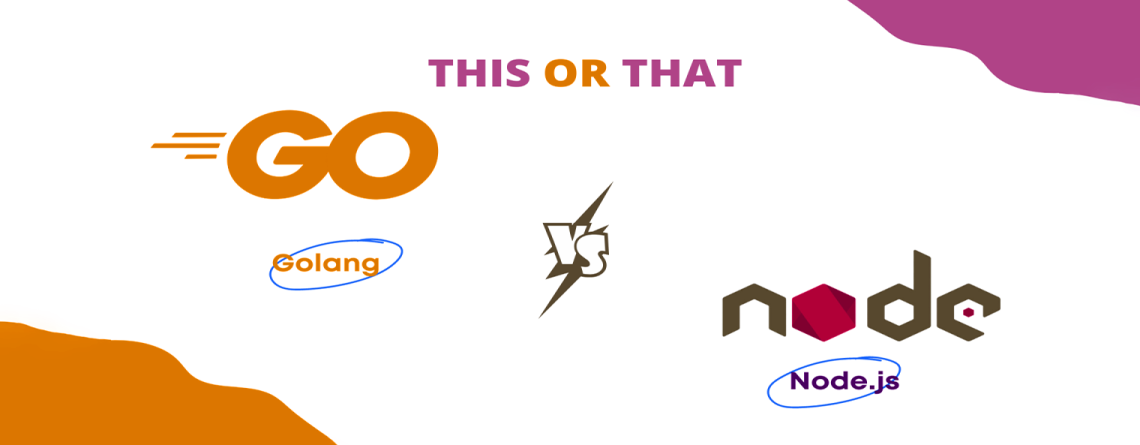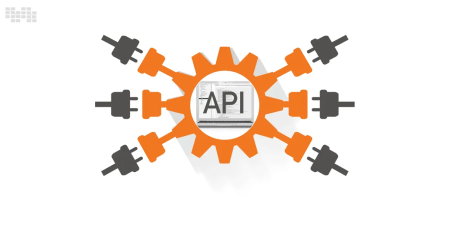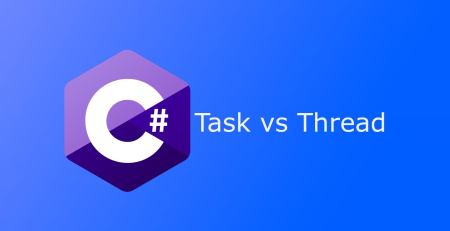Node.js vs Go: Decoding the Best Backend Language for Your Project
Table of Contents
Introduction
Node.js and Go (Golang) are two of the leading competitors in backend programming language. The success and efficiency of your project might be greatly impacted by the programming language you choose in the dynamic field of backend development. Due to their distinct qualities, strong ecosystems, and performance capabilities, both languages have grown in popularity. We will examine the nuances of both Go and Node.js in this extensive article, offering a thorough analysis to assist you in choosing the right tool for your next backend project.
1. Introduction to Node.js
In the growing world of working with computer code, picking a language to use is very important. It affects how fast and big it can grow as well as if the project will be lucky or not. Two popular choices that have caught everyone’s attention and use are Node.js and Go (Golang). Let’s start a trip to find out where these strong backend languages come from, what they are like and their special qualities.
Brief History and Overview of Node.js
Node.js:
In 2009, Node.js was created and it changed how people make server-side JavaScript apps forever. Created by Ryan Dahl, Node.js is made with the V8 JavaScript engine that also moves Google Chrome’s web browser tool. Node.js introduced an important idea, a non-blocking input/output model that uses JavaScript. This helps build big and fast applications without problems.
Node.js gained popularity for its ability to handle concurrent connections efficiently, making it an excellent choice for applications requiring real-time communication and responsiveness. Its lightweight and fast-paced development environment, along with the extensive npm (Node Package Manager) ecosystem, positioned Node.js as a go-to solution for building web servers, APIs, and microservices.
Key Characteristics of Node.js
- Asynchronous, Event-Driven: Node.js employs an event-driven architecture that allows asynchronous execution of tasks. This non-blocking I/O model enables handling a large number of concurrent connections without the need for heavy threading.
- Single-Threaded Execution: Despite being single-threaded, Node.js utilizes an event loop to manage multiple operations concurrently. This makes it particularly well-suited for applications requiring high concurrency and real-time capabilities.
- JavaScript Everywhere: Node.js utilizes JavaScript for both server-side and client-side development, fostering code reusability and streamlining the development process for full-stack developers.
Introduction to Go and Its Origins
Go (Golang):
Go, an open-source programming language developed at Google, had its inception in 2007 by Robert Griesemer, Rob Pike, and Ken Thompson. Officially released in 2009, Go was designed to address the challenges faced by developers in existing languages while maintaining simplicity, efficiency, and ease of use.
Go’s primary goals were to offer fast compilation, easy concurrency, and a clean syntax. Its origins at Google played a significant role in shaping Go’s development, emphasizing simplicity without sacrificing performance. Go quickly gained recognition for its suitability in building scalable, concurrent, and efficient systems.
Key Characteristics of Go (Golang)
- Concurrency with Goroutines: Go introduces goroutines, lightweight threads managed by the Go runtime. This concurrency model simplifies the development of concurrent and parallel systems, making it easy to write scalable and efficient code.
- Static Typing and Compilation: Go’s statically-typed nature enhances code reliability and performance by catching errors at compile-time. The language’s compilation to machine code results in binaries that are easy to deploy and execute quickly.
- Simplicity and Readability: Go embraces simplicity in its syntax and design philosophy. The language prioritizes readability, making it easier for developers to understand and maintain code, a crucial aspect for long-term project success.
As we delve deeper into the realms of Node.js and Go, we will explore their performance characteristics, concurrency models, ecosystems, and real-world use cases to aid in making informed decisions for backend development projects.
2. Performance Benchmarking: Unveiling the Speed and Efficiency of Node.js and Go
One of the critical considerations in choosing a backend language for your project is performance. In this section, we’ll conduct an in-depth performance benchmarking analysis of Node.js and Go, aiming to unravel their speed, efficiency, and resource utilization. Through comprehensive code examples and real-world scenarios, we’ll explore how each language handles various workloads and scales under pressure.
2.1 Node.js Performance
2.1.1 Asynchronous Execution and Event Loop
Because Node.js is based on an event-driven, non-blocking approach, it is very good at managing asynchronous jobs and concurrent connections. Even with high loads, the server stays responsive because to the event loop’s effective management of I/O activities. Let’s use a little sample of code to demonstrate this:
const http = require('http');
const server = http.createServer((req, res) => {
// Simulate asynchronous task, e.g., querying a database
setImmediate(() => {
res.writeHead(200, { 'Content-Type': 'text/plain' });
res.end('Hello, World!');
});
});
const PORT = 3000;
server.listen(PORT, () => {
console.log(`Node.js server listening on port ${PORT}`);
});This example demonstrates Node.js’ ability to handle asynchronous tasks, ensuring that the server remains responsive while executing non-blocking operations.
2.1.2 Performance under High Concurrency
To test Node.js performance under high concurrency, consider a scenario where multiple clients make simultaneous requests. The following code snippet uses the ‘cluster’ module to create child processes, distributing the workload across CPU cores:
const cluster = require('cluster');
const http = require('http');
const numCPUs = require('os').cpus().length;
if (cluster.isMaster) {
// Fork workers
for (let i = 0; i < numCPUs; i++) {
cluster.fork();
}
cluster.on('exit', (worker, code, signal) => {
console.log(`Worker ${worker.process.pid} died`);
});
} else {
// Worker code
const server = http.createServer((req, res) => {
res.writeHead(200, { 'Content-Type': 'text/plain' });
res.end('Hello, World!');
});
const PORT = 3000;
server.listen(PORT, () => {
console.log(`Node.js worker ${process.pid} listening on port ${PORT}`);
});
}This code showcases Node.js’ ability to scale horizontally by utilizing multiple CPU cores, handling concurrent connections effectively.
2.2 Go (Golang) Performance
2.2.1 Concurrency with Goroutines
Go’s concurrency model relies on goroutines, lightweight threads managed by the Go runtime. This enables efficient parallelism and concurrent execution. Consider the following code snippet:
package main
import (
"fmt"
"net/http"
"sync"
)
func handler(w http.ResponseWriter, r *http.Request) {
// Simulate concurrent task, e.g., processing data
var wg sync.WaitGroup
wg.Add(1)
go func() {
defer wg.Done()
fmt.Fprint(w, "Hello, World!")
}()
wg.Wait()
}
func main() {
http.HandleFunc("/", handler)
PORT := 3000
fmt.Printf("Go server listening on port %d\n", PORT)
http.ListenAndServe(fmt.Sprintf(":%d", PORT), nil)
}In this example, Go utilizes goroutines to handle concurrent tasks, ensuring responsiveness under load.
2.2.2 Benchmarking High Concurrency
To benchmark Go’s performance under high concurrency, we can leverage goroutines and channels. The following code demonstrates a simple HTTP server handling concurrent requests:
package main
import (
"fmt"
"net/http"
"sync"
)
func handler(w http.ResponseWriter, r *http.Request) {
var wg sync.WaitGroup
wg.Add(1)
go func() {
defer wg.Done()
fmt.Fprint(w, "Hello, World!")
}()
wg.Wait()
}
func main() {
http.HandleFunc("/", handler)
PORT := 3000
fmt.Printf("Go server listening on port %d\n", PORT)
http.ListenAndServe(fmt.Sprintf(":%d", PORT), nil)
}This Go code illustrates how the language efficiently handles high concurrency, showcasing its suitability for scalable applications.
2.3 Conclusion on Performance Benchmarking
while it comes to performance, Node.js and Go both perform well while managing many jobs at once and heavy loads. Because of its non-blocking, event-driven I/O approach, Node.js works well in situations where asynchronous operations are common. However, Go’s concurrency support and goroutines make it a solid option for creating scalable and effective systems. When evaluating performance, it’s critical to match the language selection to the particular needs of your project, accounting for elements like job types, scalability needs, and anticipated workloads. As we move forward, we’ll investigate other aspects of Node.js and Go to offer a comprehensive perspective for making wise choices in backend programming.
3. Concurrency and Parallelism: Navigating the Threads of Node.js and the Goroutines of Go
The capacity to manage several activities at once effectively is critical in the ever-changing field of backend programming. Different methods to concurrency and parallelism are provided by Node.js and Go (Golang), which shapes their applicability for different use cases. This section will examine the concurrency models of both languages, showing how Go uses goroutines and channels for parallel and concurrent execution, whereas Node.js uses an event-driven, non-blocking approach.
3.1 Node.js Concurrency Model
3.1.1 Asynchronous and Event-Driven
Node.js adopts an asynchronous, event-driven model, utilizing a single-threaded event loop to handle concurrent operations. The event loop allows Node.js to process non-blocking I/O operations efficiently, ensuring that the server remains responsive to multiple simultaneous requests.
Let’s consider a practical example of asynchronous concurrency in Node.js:
const fs = require('fs');
// Reading multiple files asynchronously
fs.readFile('file1.txt', 'utf8', (err, data1) => {
console.log(data1);
});
fs.readFile('file2.txt', 'utf8', (err, data2) => {
console.log(data2);
});In this code snippet, Node.js initiates the reading of two files concurrently. The callbacks ensure that the execution remains non-blocking, allowing other tasks to be processed while waiting for I/O operations.
3.1.2 Handling Concurrent Requests
When it comes to handling concurrent requests, Node.js employs an event-driven architecture. The event loop efficiently manages incoming requests, ensuring that the server can handle a large number of simultaneous connections. Below is a simple example using the Express framework:
const express = require('express');
const app = express();
app.get('/', (req, res) => {
res.send('Hello, World!');
});
const PORT = 3000;
app.listen(PORT, () => {
console.log(`Node.js server listening on port ${PORT}`);
});Node.js excels in scenarios where non-blocking operations and efficient handling of concurrent connections are critical, making it suitable for real-time applications.
3.2 Go (Golang) Concurrency Model
3.2.1 Goroutines and Concurrency
Goroutines, lightweight threads controlled by the Go runtime, are at the center of Go’s concurrency mechanism. Goroutines allow programmers to build concurrent code that is comprehensible and efficient. Take a look at this instance:
package main
import (
"fmt"
"time"
)
func printNumbers() {
for i := 1; i <= 5; i++ {
time.Sleep(1 * time.Second)
fmt.Printf("%d ", i)
}
}
func printLetters() {
for char := 'A'; char <= 'E'; char++ {
time.Sleep(1 * time.Second)
fmt.Printf("%c ", char)
}
}
func main() {
go printNumbers()
go printLetters()
// Allow goroutines to complete
time.Sleep(6 * time.Second)
}In this Go code, two goroutines, printNumbers and printLetters, execute concurrently. The time.Sleep ensures that the main function waits for both goroutines to complete their execution.
3.2.2 Channels for Communication
To facilitate communication between goroutines, Go provides channels. Channels allow safe data exchange between concurrent threads. Here’s an example:
package main
import (
"fmt"
"time"
)
func sendData(ch chan string) {
for i := 1; i <= 3; i++ {
time.Sleep(1 * time.Second)
ch <- fmt.Sprintf("Data %d", i)
}
close(ch)
}
func receiveData(ch chan string) {
for {
data, ok := <-ch
if !ok {
break
}
fmt.Println(data)
}
}
func main() {
dataChannel := make(chan string)
go sendData(dataChannel)
go receiveData(dataChannel)
// Allow goroutines to complete
time.Sleep(5 * time.Second)
}In this example, the sendData and receiveData goroutines communicate through the dataChannel, demonstrating Go’s safe and efficient communication between concurrent processes.
3.3 Conclusion on Concurrency and Parallelism
Node.js and Go showcase distinct approaches to concurrency and parallelism. Node.js, with its event-driven, non-blocking model, excels in scenarios where handling multiple concurrent connections and asynchronous operations are crucial, making it suitable for applications with a high degree of I/O operations.
On the other hand, Go’s concurrency model, centered around goroutines and channels, provides an elegant and efficient solution for concurrent and parallel execution. Go’s simplicity and built-in support for concurrency make it well-suited for building scalable systems and distributed applications.
As you navigate the threads of Node.js and the goroutines of Go, consider the specific requirements of your project, the nature of tasks, and scalability needs to determine which language aligns better with your backend development goals. In the subsequent sections, we will further explore the ecosystems, syntax, and real-world use cases of Node.js and Go to provide a comprehensive understanding for making informed decisions.
4. Ecosystem and Libraries: Navigating the Expansive Terrain of Node.js and Go
A backend project’s functionality, maintainability, and rate of development may all be greatly impacted by a strong ecosystem and libraries. We’ll examine the ecosystems of Go (Golang) and Node.js in this part, delving into their respective package managers, frameworks, and accessible libraries. Whether it’s the simplicity of Go’s standard library or the vast npm (Node Package Manager) ecosystem of Node.js, knowing the advantages and disadvantages of each ecosystem is essential for making wise decisions in backend development.
4.1 Node.js Ecosystem
4.1.1 npm – The Node Package Manager
Central to the Node.js ecosystem is npm, a powerful package manager that facilitates the installation, sharing, and management of JavaScript libraries. npm boasts a vast repository of over a million packages, covering a wide range of functionalities. The npm command-line tool simplifies package installation and version management, fostering a collaborative and dynamic development environment.
4.1.2 Express.js – A Robust Web Application Framework
Express.js is one of the most notable frameworks in the Node.js ecosystem. Express.js, well-known for its adaptability and simple architecture, makes creating web apps and APIs easier. Because of its middleware design, developers can easily include new features into their apps.
const express = require('express');
const app = express();
app.get('/', (req, res) => {
res.send('Hello, Express!');
});
const PORT = 3000;
app.listen(PORT, () => {
console.log(`Node.js server using Express listening on port ${PORT}`);
});Express.js exemplifies the vibrant and diverse range of frameworks available within the Node.js ecosystem.
4.2 Go Ecosystem
4.2.1 Standard Library – A Comprehensive Toolkit
Go takes pride in its standard library, offering a comprehensive toolkit for developers without heavy reliance on external dependencies. The standard library includes packages for networking, encryption, file handling, and more. This minimalistic approach enhances code maintainability and simplifies project dependencies.
4.2.2 Gorilla Mux – A Multiplexer for Routing in Go
While Go’s standard library is powerful, developers often turn to external libraries for specific functionalities. Gorilla Mux is a popular third-party package for routing in Go applications. It provides a flexible and powerful router that simplifies URL routing and parameter parsing.
package main
import (
"fmt"
"net/http"
"github.com/gorilla/mux"
)
func main() {
router := mux.NewRouter()
router.HandleFunc("/", func(w http.ResponseWriter, r *http.Request) {
fmt.Fprint(w, "Hello, Gorilla Mux!")
}).Methods("GET")
PORT := 3000
http.Handle("/", router)
fmt.Printf("Go server using Gorilla Mux listening on port %d\n", PORT)
http.ListenAndServe(fmt.Sprintf(":%d", PORT), nil)
}Gorilla Mux exemplifies how external libraries seamlessly integrate with Go, enhancing its ecosystem without compromising simplicity.
4.3 Comparing Package Management
4.3.1 npm vs. Go Modules
npm’s approach to package management involves a centralized repository and a hierarchical dependency resolution system. Developers can easily install, update, and share packages using the npm CLI.
Go Modules, introduced in Go 1.11, provides a solution to Go’s historical challenges in dependency management. With go modules, developers can define dependencies in a go.mod file, and Go automatically fetches the required packages. The integration of go modules simplifies dependency management and versioning in Go projects.
4.4 Conclusion on Ecosystem and Libraries
Both Node.js and Go offer robust ecosystems and libraries that cater to diverse backend development needs. Node.js thrives on the expansive npm repository and the plethora of frameworks like Express.js, fostering a dynamic and collaborative environment. Go, with its minimalist standard library and external packages like Gorilla Mux, emphasizes simplicity and efficiency.
When choosing between Node.js and Go for your backend project, consider the specific requirements, development preferences, and the nature of the tasks at hand. Whether it’s the vast npm ecosystem or the simplicity of Go’s standard library, each ecosystem brings its strengths to the table. In the subsequent sections, we’ll explore the syntax and language features of Node.js and Go, providing further insights into their respective development paradigms.
5. Syntax and Language Features: Unraveling the Code Structures of Node.js and Go
The syntax and language features of a programming language significantly impact development efficiency, readability, and maintainability. In this section, we’ll dissect the syntax and features of Node.js and Go (Golang), providing code examples to highlight their respective strengths and nuances. From the asynchronous nature of JavaScript in Node.js to the simplicity and conciseness of Go, understanding the syntax is crucial for developers aiming to harness the full potential of these backend languages.
5.1 Node.js Syntax and Language Features
5.1.1 Asynchronous JavaScript
Node.js uses JavaScript for both server-side and client-side development work. The delayed timing of JavaScript in Node.js is a main part that lets us do I/O operations without stopping them. Let’s explore a basic asynchronous example:
const fs = require('fs');
// Reading a file asynchronously
fs.readFile('example.txt', 'utf8', (err, data) => {
if (err) throw err;
console.log(data);
});
console.log('Reading file asynchronously...');In this example, the readFile function initiates an asynchronous file read operation, and the callback is executed once the operation completes. Meanwhile, the program continues executing other tasks, showcasing Node.js’ non-blocking I/O model.
5.1.2 Callbacks and Promises
Callbacks are a common pattern in Node.js for handling asynchronous operations. However, with the introduction of Promises and async/await, developers have alternative approaches for managing asynchronous code. Consider the following example using Promises:
const fs = require('fs').promises;
// Reading a file using Promises
async function readFileAsync() {
try {
const data = await fs.readFile('example.txt', 'utf8');
console.log(data);
} catch (error) {
console.error(error);
}
}
console.log('Reading file using Promises...');
readFileAsync();Promises and async/await provide a more readable and structured way to handle asynchronous code in Node.js.
5.2 Go (Golang) Syntax and Language Features
5.2.1 Strong Typing and Declarations
Go is statically typed, providing a strong type system that enhances code reliability and performance. Variable declarations and type annotations are explicit, contributing to code clarity. Here’s a basic example:
package main
import "fmt"
func main() {
var message string = "Hello, Go!"
fmt.Println(message)
}In this Go code, the variable message is explicitly declared as a string. Go’s syntax emphasizes clarity and simplicity.
5.2.2 Goroutines and Concurrency
Goroutines are a standout feature of Go, providing a lightweight and concurrent execution model. The syntax for creating and executing goroutines is straightforward:
package main
import (
"fmt"
"time"
)
func printNumbers() {
for i := 1; i <= 5; i++ {
time.Sleep(1 * time.Second)
fmt.Printf("%d ", i)
}
}
func main() {
go printNumbers()
time.Sleep(6 * time.Second)
}Here, the printNumbers function runs concurrently as a goroutine, showcasing Go’s native support for concurrency.
5.3 Comparing Syntax and Language Features
5.3.1 JavaScript Flexibility vs. Go Simplicity
Node.js, with its foundation in JavaScript, offers flexibility and familiarity for developers working on both frontend and backend tasks. The dynamic nature of JavaScript allows for concise and expressive code, but it may also introduce challenges in large codebases.
Go, in contrast, embraces simplicity and readability. The statically-typed nature of Go, along with explicit declarations, enhances code clarity and makes it well-suited for building scalable and maintainable systems.
5.3.2 Error Handling
Both Node.js and Go have distinct approaches to error handling. In Node.js, the convention of using callbacks with error-first parameters is prevalent, while Go typically uses multiple return values for functions, often returning an error as the last value.
// Node.js error handling
fs.readFile('example.txt', 'utf8', (err, data) => {
if (err) {
console.error(err);
return;
}
console.log(data);
});// Go error handling
data, err := ioutil.ReadFile("example.txt")
if err != nil {
fmt.Println(err)
return
}
fmt.Println(string(data))Understanding the idioms and conventions of error handling in each language is crucial for writing robust and maintainable code.
5.4 Conclusion on Syntax and Language Features
The target use cases and design philosophies of Node.js and Go are reflected in their distinct syntax and linguistic characteristics. Node.js performs very well in situations needing non-blocking I/O operations because it makes use of JavaScript’s asynchronous features. JavaScript’s expressiveness is partly attributed to its dynamic and flexible nature.
Conversely, Go’s grammar prioritizes readability, explicitness, and simplicity. Go’s inherent concurrency support via goroutines, robust type, and simple design make it an ideal choice for developing scalable, effective, and maintainable systems.
As you navigate the syntax and language features of Node.js and Go, consider the specific needs of your project, the preferences of your development team, and the nature of the tasks you aim to accomplish. In the subsequent sections, we’ll delve into real-world use cases and explore the scalability and microservices capabilities of both Node.js and Go.
6. Scalability and Microservices: Architectural Considerations in Node.js and Go
A key component of backend development is scalability, and a system’s design and scalability can be greatly impacted by the programming language selection. This section will examine the ways in which Node.js and Go (Golang) tackle the issue of scalability and whether or not they are appropriate for developing microservices. Making educated judgments in backend programming requires an awareness of scalability capabilities, from the event-driven paradigm of Node.js to the concurrency support of Go.
6.1 Scalability in Node.js
6.1.1 Event-Driven Architecture
Node.js leverages an event-driven, non-blocking I/O model to handle multiple concurrent connections efficiently. This model makes it well-suited for applications with high levels of I/O operations, such as real-time web applications, chat applications, and streaming services.
const http = require('http');
const server = http.createServer((req, res) => {
// Handling each request asynchronously
setImmediate(() => {
res.writeHead(200, { 'Content-Type': 'text/plain' });
res.end('Hello, World!');
});
});
const PORT = 3000;
server.listen(PORT, () => {
console.log(`Node.js server listening on port ${PORT}`);
});The asynchronous, event-driven nature of Node.js allows it to efficiently handle a large number of concurrent connections without the need for extensive multithreading.
6.1.2 Clustering for Vertical Scaling
Node.js provides the ‘cluster’ module to enable vertical scaling by utilizing multiple CPU cores. The following example demonstrates how to create worker processes for handling concurrent requests:
const cluster = require('cluster');
const http = require('http');
const numCPUs = require('os').cpus().length;
if (cluster.isMaster) {
// Fork workers
for (let i = 0; i < numCPUs; i++) {
cluster.fork();
}
cluster.on('exit', (worker, code, signal) => {
console.log(`Worker ${worker.process.pid} died`);
});
} else {
// Worker code
const server = http.createServer((req, res) => {
res.writeHead(200, { 'Content-Type': 'text/plain' });
res.end('Hello, World!');
});
const PORT = 3000;
server.listen(PORT, () => {
console.log(`Node.js worker ${process.pid} listening on port ${PORT}`);
});
}By utilizing the ‘cluster’ module, Node.js enables vertical scaling by creating multiple worker processes to handle concurrent requests.
6.2 Scalability in Go
6.2.1 Concurrency with Goroutines
Go’s concurrency model is centered around goroutines, which are lightweight threads managed by the Go runtime. This makes it easy to write concurrent and parallel code. Goroutines enable Go to efficiently utilize multiple CPU cores, contributing to its scalability.
package main
import (
"fmt"
"sync"
)
func concurrentTask(wg *sync.WaitGroup, id int) {
defer wg.Done()
fmt.Printf("Executing concurrent task %d\n", id)
}
func main() {
var wg sync.WaitGroup
for i := 1; i <= 5; i++ {
wg.Add(1)
go concurrentTask(&wg, i)
}
// Wait for all goroutines to complete
wg.Wait()
}In this Go example, multiple concurrent tasks are executed using goroutines, demonstrating Go’s native support for concurrency.
6.2.2 Goroutines and Horizontal Scaling
Go facilitates horizontal scaling through its ability to spawn thousands of goroutines, each handling a specific task. This makes it well-suited for building scalable systems and microservices. The following example illustrates a simple HTTP server using goroutines:
package main
import (
"fmt"
"net/http"
)
func handler(w http.ResponseWriter, r *http.Request) {
fmt.Fprint(w, "Hello, Go!")
}
func main() {
http.HandleFunc("/", handler)
PORT := 3000
fmt.Printf("Go server listening on port %d\n", PORT)
http.ListenAndServe(fmt.Sprintf(":%d", PORT), nil)
}In this Go code, the HTTP server can handle multiple concurrent requests efficiently, demonstrating the language’s suitability for scalable applications.
6.3 Microservices in Node.js and Go
6.3.1 Node.js for Microservices
Node.js has gained popularity in the microservices architecture due to its event-driven nature and lightweight design. Microservices built with Node.js can communicate asynchronously, enabling the development of loosely coupled and independently deployable services.
Frameworks like Express.js, along with tools like RabbitMQ or Kafka for message brokering, contribute to the development of scalable and resilient microservices in Node.js.
6.3.2 Go for Microservices
Go’s efficiency in concurrent and parallel processing, combined with its statically-typed nature, makes it well-suited for microservices. Go’s standard library includes features for building HTTP servers, handling JSON, and managing concurrent tasks, providing a solid foundation for microservices development.
Popular frameworks like Gin and Gorilla Mux further enhance the development of microservices in Go, offering routing, middleware, and other essential features.
6.4 Conclusion on Scalability and Microservices
Node.js and Go present compelling solutions for building scalable backend systems and microservices. Node.js’ event-driven model excels in handling concurrent connections, making it suitable for real-time applications. The ability to vertically scale using the ‘cluster’ module enhances its capability to handle increased workloads.
Go’s concurrency model with goroutines and its lightweight nature make it an excellent choice for building scalable systems. The language’s native support for horizontal scaling through goroutines enables efficient utilization of multiple CPU cores.
Scalability and microservices considerations include the type of program you’re running, the experience of your development team, and your unique set of needs. Strong features are provided by both Node.js and Go, which may be used to create backend systems that are scalable, robust, and maintainable. As we go along, we’ll examine the Go and Node.js support systems and communities, giving you an understanding of the thriving communities that fuel the languages’ expansion and advancement.
7. Community and Support: Harnessing the Power of Collaboration in Node.js and Go
A thriving and supportive community is instrumental in the success and evolution of programming languages. In this section, we’ll delve into the communities surrounding Node.js and Go (Golang), exploring the support mechanisms, resources, and collaborative environments that contribute to the growth and vitality of these languages. From vibrant forums to extensive documentation, understanding the community dynamics can aid developers in making informed decisions for their backend development endeavors.
7.1 Node.js Community and Support
7.1.1 Node.js Foundation and Open Governance
The Node.js Foundation, a group that encourages cooperation and progress, is the umbrella organization for the Node.js community. Because Node.js uses an open governance approach, participants from different companies are able to take part in decision-making. This strategy guarantees a community-driven development environment that is inclusive and varied.
7.1.2 npm – Vibrant Package Ecosystem
npm (Node Package Manager) is a central component of the Node.js ecosystem, providing a vast repository of reusable packages. The npm website serves as a hub for discovering packages, and the command-line tool simplifies package management for developers. The extensive npm ecosystem contributes to the collaborative spirit of the Node.js community.
7.1.3 Community Forums and Events
With the vibrant community forums and events hosted by Node.js, developers can ask questions, exchange tips, and learn about the newest developments. Resources for community involvement include sites like Stack Overflow, the official Node.js Discord channel, and the Node.js Google Group. Conferences like Node.js Interactive and NodeConf also offer chances for networking and information sharing.
7.2 Go Community and Support
7.2.1 Go Community Values Simplicity and Collaboration
The Go community values simplicity, clarity, and collaboration. The Go programming language was developed with the input and feedback of a vibrant community, and its open-source nature encourages contributions from developers worldwide.
7.2.2 go.dev – Centralized Resource Hub
go.dev serves as a centralized hub for Go developers, offering documentation, tutorials, and a package discovery platform. The site provides a comprehensive overview of Go projects, libraries, and tools, making it a valuable resource for both beginners and experienced developers.
7.2.3 Community Resources and Events
The Go community actively engages through various resources, including the Go Forum and the golang-nuts mailing list. Conferences like GopherCon provide a platform for Go enthusiasts to connect, share insights, and stay informed about the latest developments in the language.
7.3 Comparing Community Dynamics
7.3.1 Node.js – Diversity and Collaboration
The Node.js community, which comprises contributors from many businesses and backgrounds, is renowned for its diversity and teamwork. Members of the community are given a sense of ownership when decisions are made publicly through the use of the open governance paradigm. The npm ecosystem makes it possible for developers to easily share and find packages, which enhances cooperation even further.
7.3.2 Go – Simplicity and Inclusivity
The Go community values simplicity and inclusivity, with a strong emphasis on clear communication and collaboration. The language’s design principles prioritize simplicity, which resonates with developers seeking a straightforward and effective programming experience. The centralized resources on go.dev and active community forums contribute to the overall collaborative spirit of the Go community.
7.4 Conclusion on Community and Support
The communities surrounding Node.js and Go play a pivotal role in the success, evolution, and adoption of these programming languages. Both communities emphasize collaboration, transparency, and inclusivity, creating environments where developers can contribute, learn, and grow.
For developers considering Node.js or Go for their backend projects, the vibrancy and supportiveness of the respective communities are crucial factors. Whether it’s the extensive npm ecosystem and collaborative forums of Node.js or the simplicity and inclusivity of the Go community, the dynamics of the community can significantly impact the development experience.
As we conclude our exploration of Node.js and Go, it’s essential to consider all aspects discussed throughout this journey—syntax, performance, scalability, microservices capabilities, ecosystems, and community dynamics. Each language brings its unique strengths to the table, and the choice ultimately depends on the specific needs, preferences, and goals of the development team and the project at hand.
8. Case Studies: Real-World Applications of Node.js and Go
In this section, we’ll delve into real-world case studies that highlight the successful adoption and implementation of Node.js and Go (Golang) in various industries. These case studies provide insights into how each language addresses specific challenges and delivers efficient solutions for building scalable, performant, and maintainable backend systems.
8.1 Node.js Case Study: Netflix
8.1.1 Background
Netflix, a global streaming giant, relies on Node.js to power various aspects of its platform. With millions of subscribers worldwide, Netflix requires a backend infrastructure capable of handling massive concurrent connections, providing a seamless user experience, and supporting real-time updates.
8.1.2 Implementation
Node.js is utilized at Netflix for building the server-side applications responsible for managing user sessions, content streaming, and the recommendation algorithm. The asynchronous and event-driven nature of Node.js aligns well with the demands of a streaming service, where real-time updates and efficient I/O operations are critical.
Netflix’s adoption of Node.js showcases its ability to scale horizontally, handle concurrent connections effectively, and deliver a responsive and dynamic user experience.
8.2 Go Case Study: Uber
8.2.1 Background
Uber, a leading global ride-sharing and transportation platform, faced the challenge of building a scalable and performant backend system to support its growing user base. The need for low-latency responses, efficient concurrency handling, and system reliability led Uber to adopt Go for certain components of its infrastructure.
8.2.2 Implementation
Go is employed at Uber for building microservices and backend components that require high concurrency and low-latency processing. Go’s native support for concurrency through goroutines and efficient handling of concurrent tasks makes it well-suited for building scalable and responsive services.
Uber’s use of Go demonstrates its effectiveness in building distributed systems, handling concurrent operations, and providing a reliable backend infrastructure for a high-demand transportation platform.
8.3 Node.js and Go Together: LinkedIn
8.3.1 Background
LinkedIn, the professional networking platform, utilizes both Node.js and Go in its backend architecture. The platform requires a diverse set of technologies to handle various tasks, from real-time messaging to efficiently serving dynamic content.
8.3.2 Implementation
Node.js is employed at LinkedIn for real-time features, such as messaging and notifications, where the event-driven model is beneficial. Go, on the other hand, is utilized for backend services that require high concurrency and efficient parallel processing.
LinkedIn’s approach of using both Node.js and Go demonstrates how the strengths of each language can be leveraged in a complementary manner to address different aspects of a complex and diverse backend system.
8.4 Conclusion on Case Studies
The case studies of Netflix, Uber, and LinkedIn highlight the versatility and effectiveness of Node.js and Go in addressing the backend challenges of large-scale, dynamic platforms. Whether it’s the real-time capabilities of Node.js, the concurrency support of Go, or the collaborative use of both languages, these case studies provide valuable insights for developers and organizations considering the adoption of Node.js or Go in their projects.
As with any technology decision, the suitability of Node.js or Go depends on the specific requirements, use cases, and goals of the project. The success stories of these industry giants underscore the importance of choosing the right backend technology to build robust, scalable, and high-performance systems.











Leave a Reply